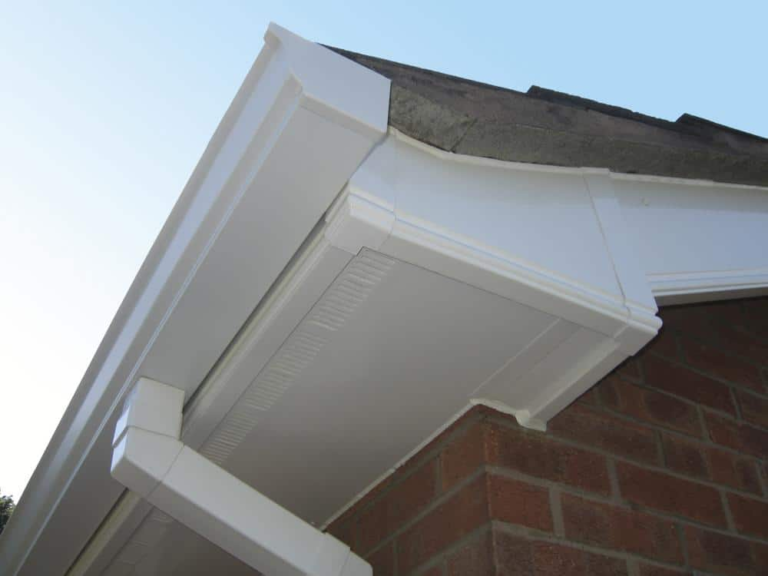
Fascia And Gutter Replacement
Overview
-
Sectors Health Care
Company Description
See What Eaves Replacement Tricks The Celebs Are Making Use Of

The Complete Guide to Eaves Replacement
Eaves are a crucial part of a structure’s roofing system. These overhanging edges serve several purposes, from directing rainwater far from the foundation to improving the visual appeal of a structure. However, like any other structure part, eaves can wear with time due to exposure to the components. This short article will check out the significance of eaves, the signs that indicate a requirement for replacement, the procedure of eaves replacement, and regularly asked questions related to this subject.
Understanding Eaves
Eaves are the part of a roofing system that overhangs the walls of a structure. They can be found in numerous architectural styles, and their design frequently depends on the structure’s general aesthetic. The main functions of eaves are:
-
Water Management: Eaves assist in directing rainwater away from the walls and foundation, therefore preventing water damage and disintegration.
-
Protection: They protect the structure from direct sunlight, which can assist in decreasing cooling expenses in warmer environments.
-
Aesthetic Appeal: Eaves contribute significantly to the architectural style and charm of a structure.
Types of Eaves
There are mostly 2 types of eaves: Open Eaves and Closed Eaves.
-
Open Eaves: These have actually exposed rafters or beams and provide a rustic look. They are easy to preserve but might require more attention to prevent water damage.
-
Closed Eaves: These are completed with a soffit and fascia, creating a cleaner appearance. They typically are much better at hiding vital components, such as ventilation systems.
| Feature | Open Eaves | Closed Eaves |
|---|---|---|
| Visual Appeal | Rustic | Tidy |
| Maintenance Ease | Simpler | More Complex |
| Security Level | Moderate | High |
Signs That Your Eaves Need Replacement
It is vital to inspect eaves occasionally to guarantee they are in great condition. Some indications that show a need for eaves replacement include:
-
Visible Damage: Cracks, holes, or considerable wear are clear indications that your eaves might require replacement.
-
Water Stains: If you observe water spots on interior walls or ceilings, it could suggest that water is not being properly directed away.
-
Drooping or Drooping: Eaves that droop or droop might be an indication of structural failure or heavy water build-up.
-
Rotting Wood: Wood eaves are vulnerable to rot. If the wood feels soft or shows indications of decay, replacement is required.
-
Bug Infestation: Evidence of insects like ants or termites can be an indication of instability in the eaves and thus a need for replacement.
The Eaves Replacement Process
Changing eaves can be a labor-intensive task, typically requiring professional assistance. Below is a step-by-step procedure of how eaves are typically changed:
-
Assessment: Identify damage and determine the kind of eaves that require to be replaced.
-
Removal: Carefully eliminate the existing eaves. This may include cutting nails or screws and guaranteeing that contributing structures are not harmed.
-
Preparation: Inspect and repair any damage to the underlying structures, such as fascia boards.
-
Installation: Install the brand-new eaves. This involves attaching them safely to guarantee prevent future problems.
-
Completing Touches: After installation, painting or sealing the eaves may be essential to protect against the components.
-
Examination: Carry out a final examination to guarantee that whatever has actually been installed correctly and that there are no leakages.
Maintenance Tips for Eaves
Once the brand-new eaves are installed, it is vital to keep them properly maintained. Here are some ideas:
- Regularly clean seamless gutters to prevent blockages.
- Inspect eaves after heavy storms for any damage.
- Paint or seal wood eaves every 3-5 years to avoid rot.
FAQs About Eaves Replacement
Q1: How long does it normally require to change eaves?A: The duration depends upon the size of the task and complexity but can range from a couple of hours to a number of days.
Q2: Can I replace eaves myself?A: DIY replacement is possible for those with the ideal abilities and tools. However, hiring professionals is a good idea for safety and effectiveness, particularly for complicated structures. Q3: What materials are typically used for eaves?A: Eaves can
be made from numerous products, consisting of wood, vinyl,
aluminum, and fiber cement. The choice often depends upon the structure’s style and environmental conditions. Q4: How much does eaves replacement typically cost?A: Costs vary substantially based upon location, products picked, and labor charges, typically ranging
from ₤ 100 to ₤ 300 per direct foot for installation. Q5: Can I change the style of my eaves?A: Yes, eaves can be changed with a different design during the replacement process, enabling house owners to enhance their structure’s aesthetics. Eaves play a vital function in safeguarding a building and enhancing its look. Routine assessments and timely replacements are vital to keep both performance and visual appeals. While eaves replacement can be an overwhelming task, comprehending the procedure and understanding when to do something about it can make it more manageable. Interested property owners ought to consult experts to ensure an effective replacement procedure tailored to their specific requirements.
